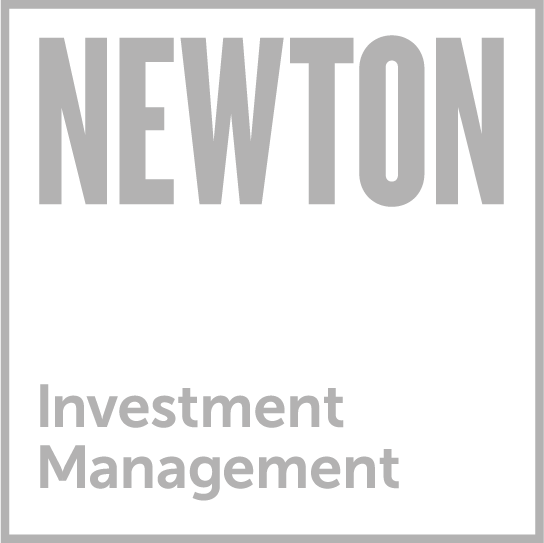BNY Mellon Growth ETF Model
Why Invest in Our Model
- Seeks to provide investors with exposure to a growth-oriented portfolio focused on capital return.
- Invests in a diversified portfolio of ETFs from BNY Mellon and external asset managers, which are comprised of mostly stocks and some bonds.
- Model is designed to address the specific needs of investors while providing an appropriate risk tolerance.
DATE
EXPENSE RATIO
Weighted Average Expense Ratio is calculated based on each of the underlying ETF's latest prospectus net expense ratio and the proportional size of each ETF' s weighted position within the overall portfolio.
12-Month Portfolio Yield is the sum of the portfolio's total trailing 12-month interest and dividend payments divided by the last month's ending share price (NAV) plus any capital gains distributed over the same period. The yield shown is represented by the weighted average 12 month trailing yield of the underlying ETFs' weighted positions within the portfolio.
Portfolio Asset Allocation
As of
- Display Net data
- Display Gross data
Performance Inception Date: August 1, 2020
Portfolio returns assume the reinvestment of dividends, are net of underlying fund expenses, and are net of a 2.0% annual account advisory fee, which is the maximum anticipated advisory fee. Please refer to the Important Performance Disclosures at the bottom of the page for more information. Past performance is no guarantee of future results.
The performance data quoted represents past performance, which is no guarantee of future results. Investment return fluctuates and an investor's shares may be worth more or less than original cost upon redemption. Performance returns for less than one year are not annualized. Current performance may be lower or higher than the performance quoted.
Index performance returns do not reflect any management fees, transaction costs or expenses. Indexes are unmanaged and one cannot invest directly in an index.
On January 1, 2023, the Custom Growth benchmark was changed from a combination of 85% S&P 500® Index and 15% Bloomberg U.S. Aggregate Bond Index to a combination of 60% Russell 3000 Index, 30% MSCI ACWI ex-US gross Index, 5% Bloomberg U.S. Aggregate Bond Index and 5% Bloomberg U.S. Corporate High Yield Index for all periods since inception of the Model (the “January 2023 Benchmark”).
Subsequently, effective October 1, 2023, the Custom Growth benchmark was redefined from the January 2023 Benchmark to a combination of 60% Russell 3000 Index, 30% MSCI ACWI ex-US net Index, 5% Bloomberg U.S. Aggregate Bond Index and 5% Bloomberg U.S. Corporate High Yield Index. The rebalancing schedule was changed from monthly to quarterly rebalancing. This is a retroactive change for all periods since inception of the Model.
Actual Calendar Year Performance
- Display Net data
- Display Gross data
Actual portfolio returns assume the reinvestment of dividends, are net of underlying fund expenses, and are net of a 2.0% annual account advisory fee, which is the maximum anticipated advisory fee. Please refer to the Important Performance Disclosures at the bottom of the page for more information. Past performance is no guarantee of future results.
Net historical hypothetical performance for the SMA strategy model shown is based on the proportionally weighted blend of the net of fees performance of the benchmarks of the underlying ETFs within the strategy (including the cash position benchmark). Returns assume the reinvestment of dividends, and are net of a 2.0% annual account advisory fee, which is the maximum anticipated advisory fee, but do not reflect underlying fund expenses which would reduce returns. Please refer to the table above for the most recent asset allocation of the model: please refer to the Important Performance Disclosures at the bottom of the page for more information.
The performance data quoted represents past performance, which is no guarantee of future results. Investment return fluctuates and an investor's shares may be worth more or less than original cost upon redemption. Performance returns for less than one year are not annualized. Current performance may be lower or higher than the performance quoted.
Index performance returns do not reflect any management fees, transaction costs or expenses. Indexes are unmanaged and one cannot invest directly in an index.
On January 1, 2023, the Custom Growth benchmark was changed from a combination of 85% S&P 500® Index and 15% Bloomberg U.S. Aggregate Bond Index to a combination of 60% Russell 3000 Index, 30% MSCI ACWI ex-US gross Index, 5% Bloomberg U.S. Aggregate Bond Index and 5% Bloomberg U.S. Corporate High Yield Index for all periods since inception of the Model (the “January 2023 Benchmark”).
Subsequently, effective October 1, 2023, the Custom Growth benchmark was redefined from the January 2023 Benchmark to a combination of 60% Russell 3000 Index, 30% MSCI ACWI ex-US net Index, 5% Bloomberg U.S. Aggregate Bond Index and 5% Bloomberg U.S. Corporate High Yield Index. The rebalancing schedule was changed from monthly to quarterly rebalancing. This is a retroactive change for all periods since inception of the Model.
Portfolio Managers/Sub-Investment Adviser
BNY Mellon Securities Corporation (“BNYMSC”) is the investment advisor of record with respect to the SMA strategy described above; BNY Mellon provides certain investment advisory services to BNYMSC in connection with that strategy. Elena Goncharova, CFA, is the portfolio manager for the model, a position she has held since the model's inception. She works with clients on investment solutions tailored to clients' objectives by utilizing a multi-manager approach across multiple asset classes. Andrew Armstrong, CFA, is the investment strategist. He is responsible for aiding the investment decisions and improving and developing analytical models.
-

Elena Goncharova, CFA
Lead Portfolio Manager
4 year(s) as Portfolio Manager
-

Andrew Armstrong, CFA
Investment Strategist
2 year(s) as Portfolio Manager
Literature
BNY MELLON GROWTH ETF MODEL






